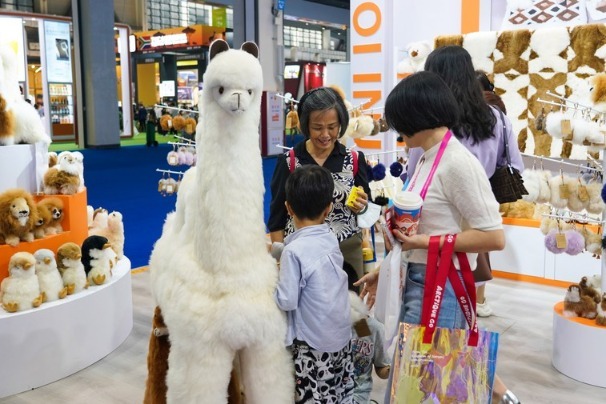Chinese manufacturers hail closer economic ties with RCEP countries


NANNING - Every 10 minutes, a brand new loader rolls off the 150-meter-long production line of Guangxi LiuGong Machinery Co Ltd, joining the rows of machines outside the plant that are ready for export.
Production at the Liuzhou-headquartered machinery manufacturer has been in full swing since the beginning of the year, with rapidly mounting overseas orders and a constantly expanding market share.
China's recovery in economic activity and the high-quality implementation of the Regional Comprehensive Economic Partnership (RCEP) has fueled the development of the manufacturing sector, getting the economy off to a strong start.
Situated in South China's Guangxi Zhuang autonomous region, which faces RCEP economies in Southeast Asia, the company has achieved a string of breakthroughs in overseas markets this year, riding the wave of China's economic recovery and booming China-RCEP cooperation.
In January, the company's export volume of construction machinery increased by over 50 percent year-on-year, and since February, the overseas shipment of large excavators has soared by 500 percent year-on-year.
During the same period, loaders produced by the company were delivered to Thailand, marking the first batch of construction machinery exported by the company under the RCEP agreement.
"Chinese products now have a good reputation and satisfactory market share in Southeast Asia. Our sales network in the region is fairly complete," said Xiang Dongsheng, vice-general manager of LiuGong Machinery Asia Pacific Co Ltd, who added that the company has accelerated the pace of international business development by taking advantage of Guangxi's geographical location and its close cooperation with the ASEAN countries.
The implementation of the RCEP offers valuable opportunities for China's manufacturing enterprises to further expand international markets, with a reduction of import costs and a bump in export opportunities.
Li Dongchun, general manager of the LiuGong Overseas Business Center, told Xinhua that the RCEP region is an important market for Chinese exports of mechanical and electrical products, and it has always been one of the company's key overseas markets.
"The implementation of the RCEP enables us to trade more efficiently, arrange business layout more flexibly and improve the marketing, manufacturing, financial leasing, aftermarket and product adaptability of our overseas subsidiaries," Li said.
Besides the major construction equipment maker, many other leading Chinese manufacturers also rang in a promising new year with growing overseas orders and rosy prospects in the global market.
Guangxi Yuchai Machinery Group Co Ltd, one of the country's largest engine manufacturers, also saw remarkable performance in the international market this year, rejoicing in surging overseas sales and expanding market share. In January, the group's export orders for bus engines increased by 180 percent year-on-year.
In recent years, the burgeoning new-energy industry has become the new driving force for manufacturing companies in overseas markets. At a warehouse, thousands of auto parts for new-energy vehicles (NEVs) from SAIC-GM-Wuling (SGMW), a major automobile manufacturer in China, have been loaded into containers, waiting to be shipped to Indonesia.
According to Zhang Yiqin, the brand and public relation director with the automaker, in January this year, the company exported 11,839 NEVs abroad, maintaining good momentum.
"In Indonesia, Wuling has achieved localized production, providing thousands of jobs and driving the improvement of the local industrial chain," said Zhang. "In the future, Wuling New Energy will center on Indonesia and open up markets in Southeast Asia and the Middle East."
According to the data from the National Bureau of Statistics, the stronger-than-expected purchasing managers' index (PMI) data for China's manufacturing sector came in at 52.6 in February, up from 50.1 in January, showing excellent vitality in the industry.




